Inventions
Smart Socks

"Imagine your phone could communicate with your socks," says the Blacksocks company. But imagine no more, because the company has now created "the smartest men's dress socks in the world." The company admits that, "This is something we dreamed about and we have made the dream come true."
The socks feature a "communication button" that allows the socks to speak to your iPhone. The things your socks might tell your iPhone include:
how often you have washed your socks,
when your socks were produced,
when you ordered your socks and
when your socks were dispatched.
Your iPhone can also tell you if your black socks are no longer properly black and help you buy new socks.
The smartest socks in the world come with a price tag of $189 for 10 pairs. So $18.90 for each pair.
Product page, via Oh Gizmo.
Posted By: Alex - Wed Mar 29, 2017 -
Comments (3)
Category: Fashion, Inventions
Atomic Bomb Car
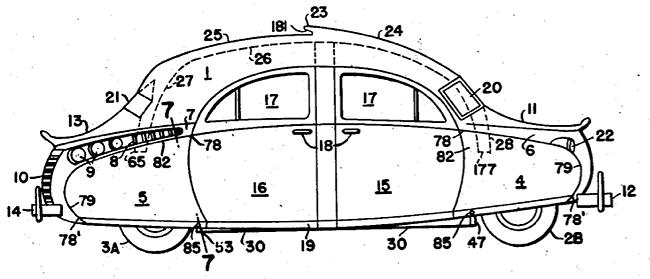
In 1953, Corwin D. Willson of Flint, Michigan patented the Atomic Bomb Car. Though the official title on the patent was a "sedan having versatile structure."
His idea was that if the United States were "atomically attacked," people would need to flee the cities, and then they'd have to live in their cars. But most cars aren't designed to be lived in. The solution: turn cars into mobile bomb shelters that could provide temporary housing for people. Essentially, he was patenting a camper car, but he was trying to market it as a defense against atomic attack.
From the patent:
And also:
More info: JF Ptak Science Books, Patent #US2638374A
Posted By: Alex - Mon Mar 27, 2017 -
Comments (1)
Category: Inventions, Patents, Atomic Power and Other Nuclear Matters, 1950s
Double-Chin Eradicator
I wonder how long you'd have to roll this thing over your face before it made the slightest bit of difference.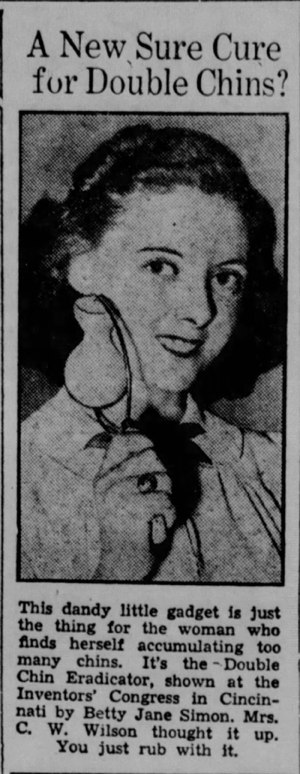
The Canyon News - Aug 4, 1938
Posted By: Alex - Sun Mar 12, 2017 -
Comments (2)
Category: Inventions, 1930s
The Total Environment Room
In 1963, GE engineer John L. Matrone came up with the idea of creating a "total environment" room. It would be capable of creating any environment (the deck of an ocean liner, a beach in Hawaii, a rainforest in Tasmania) inside your own home.The space would be 20 feet by 10 feet, with approximately 10 feet of overhead to contain a special piston arrangement and an "atmospheric preparation tank" for creating the real atmosphere of the desire scene.
(You could easily make it snow, said Matrone, but the problem would be "shoveling" all that stuff out afterward.)
One of the room's walls would be arced in 180 degrees for 3-D and motion location scenes.
I don't believe a "total environment" room was ever built, but it sounds quite a bit like the Holodeck in Star Trek (minus the holograms).
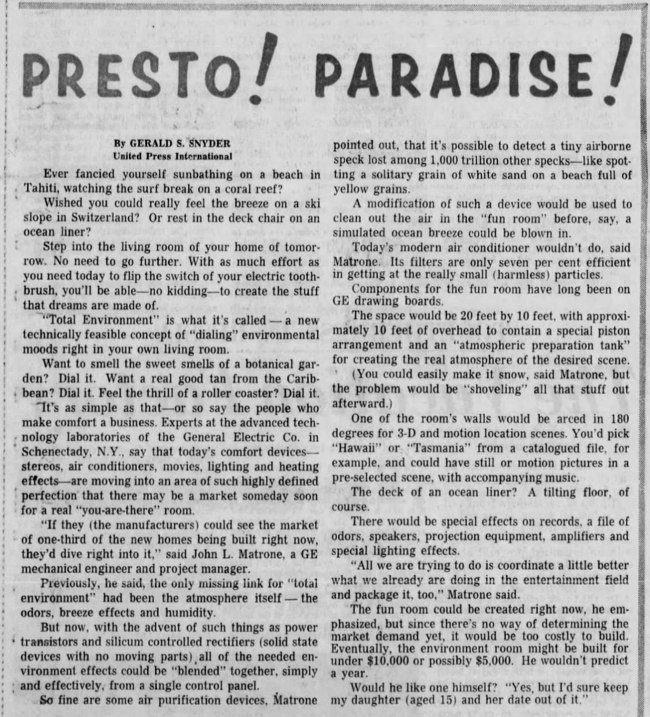
The Shreveport Times - Nov 3, 1963
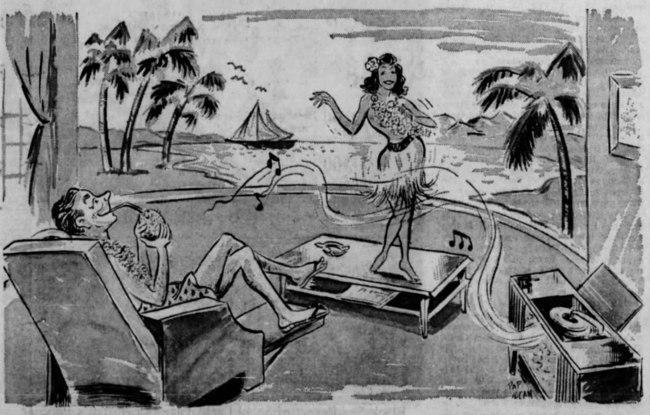
The Shreveport Times - Nov 3, 1963
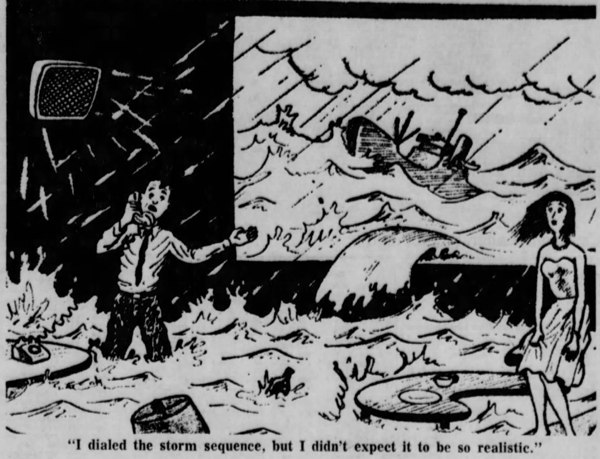
The Lincoln Star - Nov 3, 1963
Posted By: Alex - Sat Mar 11, 2017 -
Comments (1)
Category: Buildings and Other Structures, Inventions, 1960s
Gas-Proof Pram
In January 1939, these two photos appeared in numerous newspapers, accompanied by the following caption:An example of the strange effort to try to normalize life despite the threat of war. Also evident in such things as the air-raid fashions.


Posted By: Alex - Sun Mar 05, 2017 -
Comments (0)
Category: Inventions, 1930s
Heaton’s Aerocommuter
Back in 1974, David Heaton spent $50,000 pursuing his dream of building an "aerocommuter" -- a two-person flying saucer that would "cost no more than a medium-priced American car," thereby allowing everyone to fly to work.He claimed to have all the engineering problems worked out, but it doesn't sound like one of these things ever managed to leave the ground.
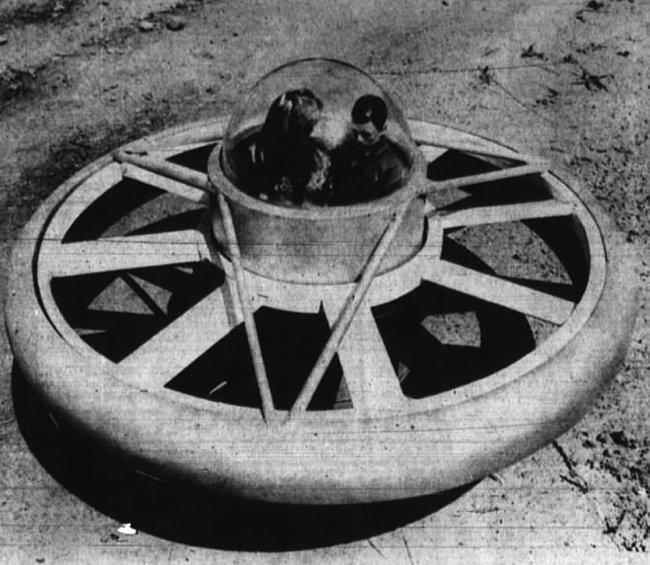
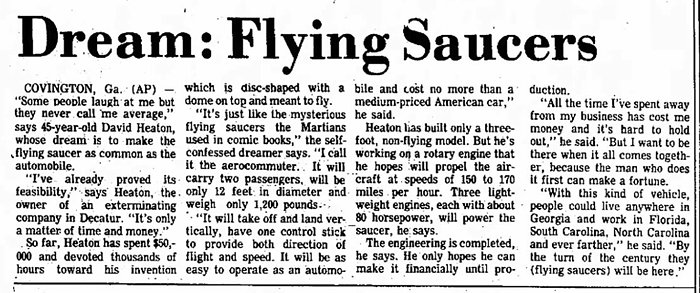
Aiken Standard - June 6, 1974
Posted By: Alex - Mon Feb 27, 2017 -
Comments (6)
Category: Inventions, Air Travel and Airlines, 1970s
Shoes for Walking on Water
Inventor K.O.F. Jacobsen of Seattle, Washington debuted his water-walking shoes in 1934 at a Cincinnati inventors' congress. He later displayed them at several other meet-ups of inventors. But although I've found several photos of models wearing the shoes, I haven't been able to find any photos of someone actually walking on water with them.
The Decatur Daily Review - Mar 30, 1937

The Cincinnati Enquirer - July 17, 1934
Posted By: Alex - Mon Jan 16, 2017 -
Comments (5)
Category: Inventions, Shoes, 1930s
Japanese Typewriters
The first Japanese typewriter was invented in 1915 by Kyota Sugimoto. By the 1920s these typewriters had begun to be used by Japanese businesses. The San Jose history blog gives a description of how they worked:The paper cylinder and typing mechanism are on ball-bearing rollers, forming a very complex mechanical marvel. Using a Bakelite knob, the operator can move this mechanism left to right or up and down above the type-nest and position the striker over the selected character. Pressing down on the knob causes a pin under the type-nest to push up the selected type block, which is grasped by the striker from above. The striker rotates the type block 90 degrees over a small ink wheel and then strikes the paper. The striker then returns to its original position, dropping the type block back into the type-nest.
The Gatunka blog notes, "The beginning of the end for Kanji typewriters was heralded by the arrival of affordable digital word processors in 1984. By the mid 90s, personal computers also began to become popular in Japanese homes, and the age of kanji typewriters came to an end."

The Whitewright Sun - June 14, 1928

source: Wikimedia Commons

source: Wikimedia Commons
Posted By: Alex - Sun Jan 15, 2017 -
Comments (6)
Category: Inventions, Patents
Anti-Cow Kicker
October 1938: Alice Anthony models an "anti-cow kicker" invented by Bill Vernia of Odebolt, Iowa.
Pittsburgh Press - Oct 16, 1938

The Franklin News-Herald - Oct 7, 1938
Posted By: Alex - Wed Jan 11, 2017 -
Comments (6)
Category: Inventions, Cows, 1930s
Mousetrap Cigarette Lighter
Introduced at the 1941 meeting of the Inventors of America society in New York — a combined mousetrap and cigarette lighter.The caption on the first image is confusing. It says "a lever sets the mouse in motion," but I assume that's a mistake. It should probably read, "The mouse sets a lever in motion."
Another newspaper offered the following explanation of the device's operation: "When mouse springs trap, it sends pinball down ramp. Ball releases spring, and up pops an arm which strikes a match."
When the Inventors of America met again later that year in Los Angeles, one of their members showed off some mice-killing

The San Bernardino County Sun - July 25, 1941

The Pittsburgh Press - July 27, 1941
Posted By: Alex - Fri Jan 06, 2017 -
Comments (4)
Category: Inventions, 1940s

| Who We Are |
|---|
| Alex Boese Alex is the creator and curator of the Museum of Hoaxes. He's also the author of various weird, non-fiction, science-themed books such as Elephants on Acid and Psychedelic Apes. Paul Di Filippo Paul has been paid to put weird ideas into fictional form for over thirty years, in his career as a noted science fiction writer. He has recently begun blogging on many curious topics with three fellow writers at The Inferior 4+1. Contact Us |




